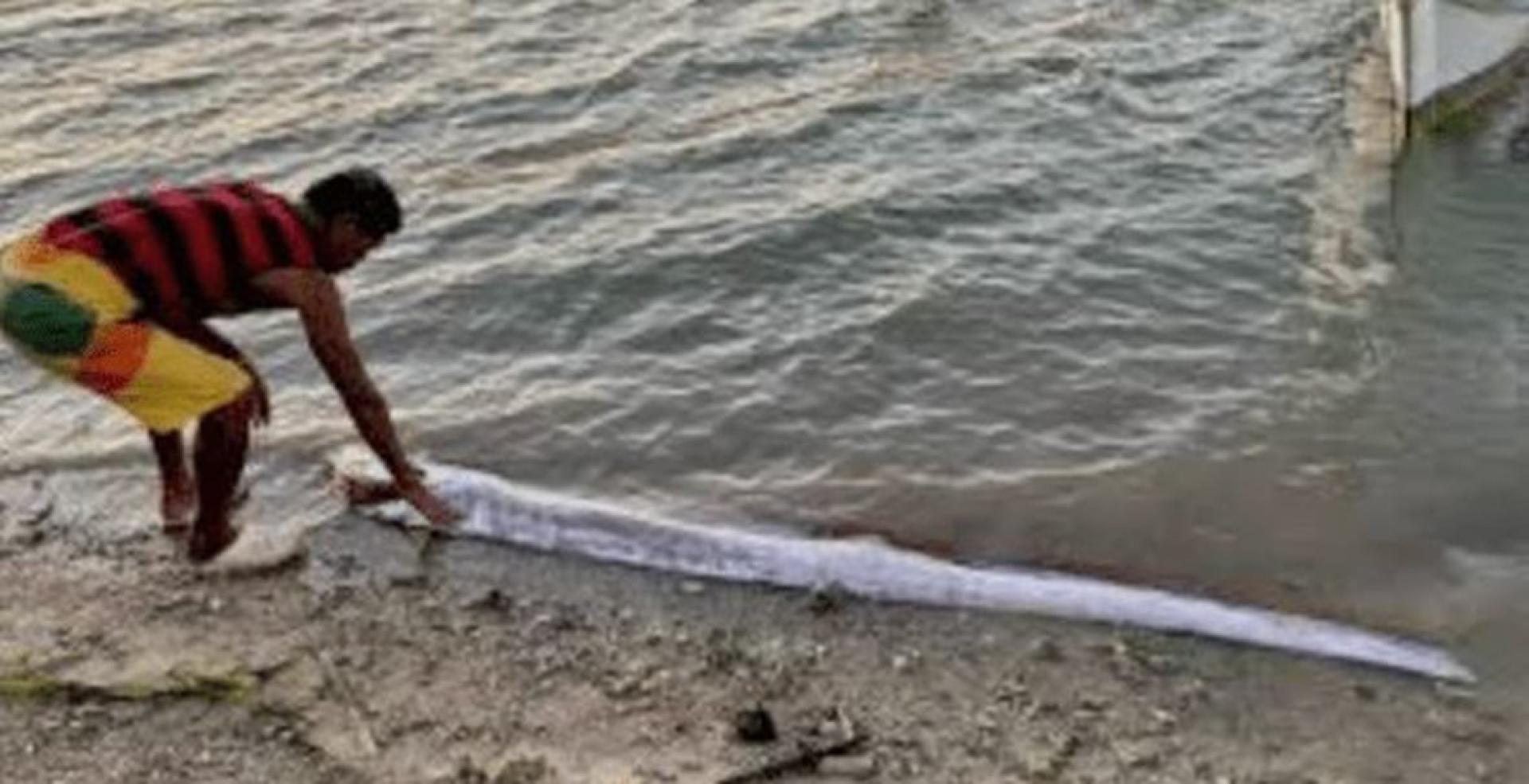A rare scene appeared in Roxas City, Oriental Mindoro Province, Philippines on the 16th of this month, when a giant oarfish (commonly known as the “earthquake fish” or “doomsday fish”) about 3.5 meters long was found stranded on the shore and eventually died. The incident quickly drew local attention, with hundreds of residents gathering at the scene to watch and take photos. However, as the Philippines has recently experienced frequent strong earthquakes, many people worried that this event was a “precursor to an earthquake,” sparking public discussion.
According to Philippine media outlet Brigada News, witnesses said that the silvery oarfish struggled for a while on the shore before losing its vitality and being washed up by the waves. Upon receiving the report, the Roxas City Agriculture Office sent personnel to the scene, confirmed that the fish was a deep-sea oarfish, and collected samples for analysis of its cause of death.
The oarfish is a deep-sea species with a slender body, and can reach lengths of up to 8 meters, making it one of the longest bony fishes in the world. They typically inhabit waters 200 to 1000 meters deep and only swim into shallow areas when seriously injured, ill, or disturbed by submarine activities. Therefore, whenever oarfish appear, they are often regarded by the public as omens of earthquakes or tsunamis, hence the name “earthquake fish.”
However, oceanographers emphasize that there is currently no scientific evidence showing a direct link between the presence of oarfish and seismic activity. Philippine marine research experts indicate that oarfish are more likely to become stranded and die after accidentally entering nearshore waters due to rising sea temperatures, abnormal currents, or changes in water pressure.
As the Philippines has experienced several earthquakes above magnitude 6 in the past two months, some residents remain uneasy. Authorities have urged the public not to believe superstitious rumors, and remind that if abnormal marine life is found again, people should avoid touching or moving it, and immediately notify local government or agriculture departments to assist research and ensure public safety.
